 Petzlover
Petzlover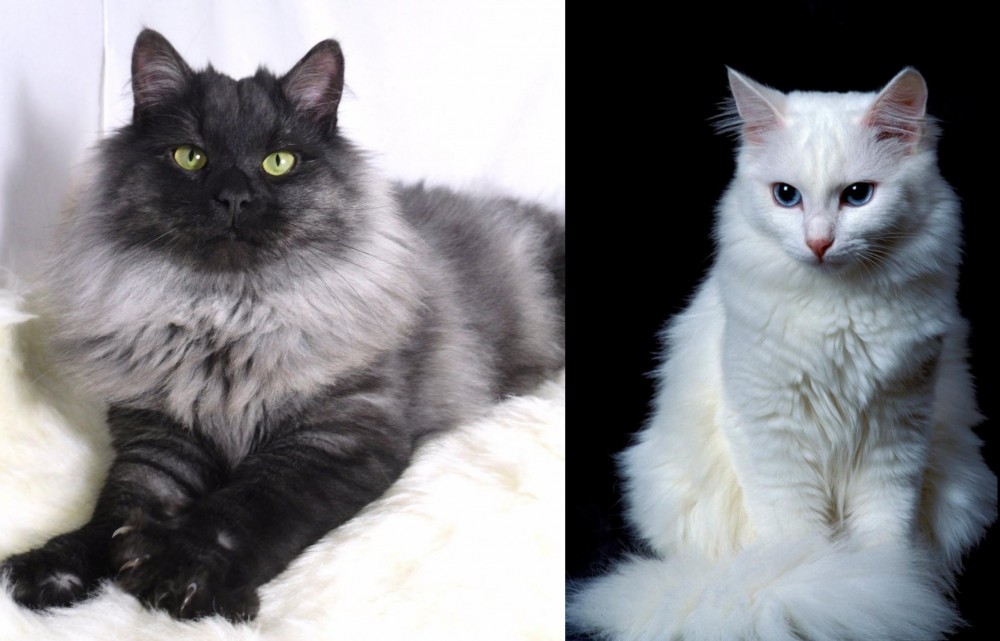 Smoke is originated from United Kingdom but Turkish Angora is originated from Turkey. Both Smoke and Turkish Angora are of same weight. Smoke may live 3 years less than Turkish Angora. Both Smoke and Turkish Angora has same litter size. Both Smoke and Turkish Angora requires Moderate Maintenance.
Smoke is originated from United Kingdom but Turkish Angora is originated from Turkey. Both Smoke and Turkish Angora are of same weight. Smoke may live 3 years less than Turkish Angora. Both Smoke and Turkish Angora has same litter size. Both Smoke and Turkish Angora requires Moderate Maintenance.
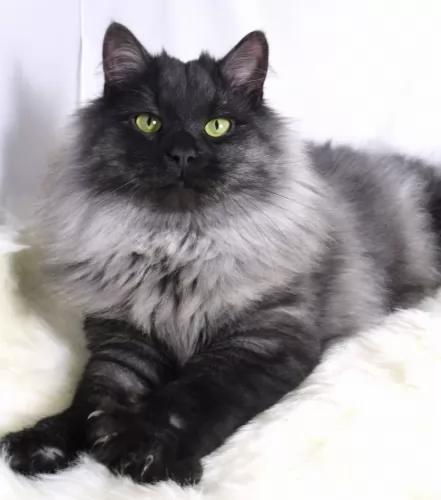 A Smoke cat is a domestic long-haired cat. The beautiful coat coloring usually comes with a silvery undercoat, with the topcoat having color points.
A Smoke cat is a domestic long-haired cat. The beautiful coat coloring usually comes with a silvery undercoat, with the topcoat having color points.
In effect, the Smoke cat isn’t a cat breed as such but is describing the color of the cat. It could be a Persian cat. It seems the Smoke cat has its origins in the 1800s in the UK from where it seems to have originated.
No one really knows the true origin of the Smokes cat but it would seem as though they evolved from breeding silver tabbies to blacks and blues.
While the early Smokes had green eyes, breeding has resulted in there being copper eyes as well.The Asian Smoke is a colour variation of the Asian that was created in the UK in the 1980s.
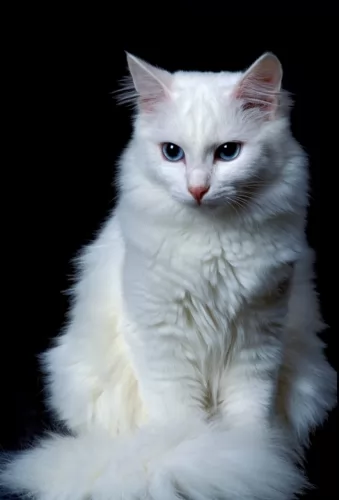 The Turkish Angora is a very old breed that naturally developed. It is thought that the breed developed in Turkey in the Ankara region formerly known as Angora.
The Turkish Angora is a very old breed that naturally developed. It is thought that the breed developed in Turkey in the Ankara region formerly known as Angora.
There are records that indicate that the Turkish Angora made an appearance in the UK as early as the 14th century already. Also, the beautiful longhaired cat was also introduced to the United States.
A breeding program was started for these cats in the early 20th century and it was then taken to Canada in 1963 and accepted as a championship breed.
While white was the only acceptable color at first, they now come in many different colors.
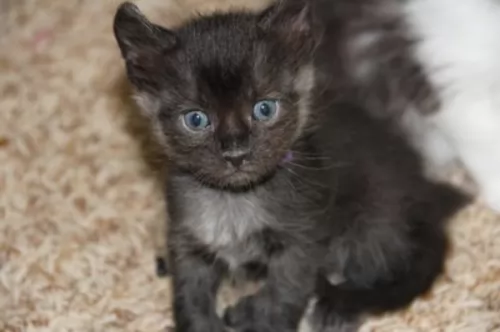 When Smoke kittens are born they have gray and white markings around each eye and around the muzzle.
When Smoke kittens are born they have gray and white markings around each eye and around the muzzle.
Essentially the Smoke cat can be black, cream, blue, red, or even tortie. Smoke actually means that the base of the hair is whitish and the rest of the hair is black, red or blue etc.
These cats can be different sizes but will no doubt be medium-sized and weigh in the region of 3 to 6kg. They are lean and muscular and can have different eye colors too – green or gold.
There are so many cat breeds and they have heaps of colors and patterns. The domestic long-haired cat is capable of a wide range of temperaments.
You can be sure that these cats are playful, fun, curious, and intelligent. Some will be more vocal than others but they will all thrive on the attention they get from their human owners. They are friendly, affectionate cats who will bond closely with their human family.
 This is a medium-sized, muscular cat that can weigh between 3 and 6kg. It is a long-haired cat and the single coat has no undercoat.
This is a medium-sized, muscular cat that can weigh between 3 and 6kg. It is a long-haired cat and the single coat has no undercoat.
While the Turkish Angora is essentially white, its coat can come in a number of other colors.
The cat’s body if firm and fairly long, the legs are long with the hind legs being longer than the front legs, The tail is long and plumed, the head has large fairly pointed ears that can have tufts of fur. The eyes are large and almond-shaped and slant somewhat upwards. The color of the eyes can be blue, green, gold, amber.
This is a very active, athletic cat and he likes nothing more than to leap up on to high perches to survey his surroundings. They are intelligent, affectionate cats and they seem to gravitate towards one special human family member.
The cat is also protective of his human family. If any family member wants to stroke and pet them, they are absolutely delighted, just lapping up the attention.
They are smart enough to learn a few tricks too. They aren’t vocal cats but are sweet and quiet as well as being affectionate, making them perfect companions.
They don’t do well with changes, and a sudden change in his lifestyle can be upsetting for him.
 Because the Smoke isn’t a cat breed as such but rather a color shade found in some long-haired cats you can’t be sure what your cat will really look like and how he will behave.
Because the Smoke isn’t a cat breed as such but rather a color shade found in some long-haired cats you can’t be sure what your cat will really look like and how he will behave.
They could be energetic, playful, or quiet and relaxed. They might be more vocal and want to talk to you or they may be content just to be wherever you are.
When you bring a Smoke cat into your life, one thing is sure, with his friendly and loving nature your world will become meaningful, as any beautiful cat such as the Smoke is guaranteed to bring in lots of smiles, joy, and love.
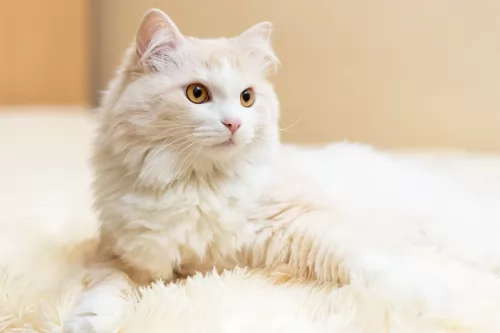 Beautiful to look at, this cat has got all the characteristics that make him a wonderful pet. He is playful well into adulthood and will love an assortment of stimulating toys to be amused by.
Beautiful to look at, this cat has got all the characteristics that make him a wonderful pet. He is playful well into adulthood and will love an assortment of stimulating toys to be amused by.
He is a sociable breed and doesn’t enjoy being left alone for hours. It would be far better to have another feline friend to keep him company.
Active and entertaining, you’ll be amused by your Turkish Angora and be so glad that you made the decision to bring such a charming creature into your home and heart.
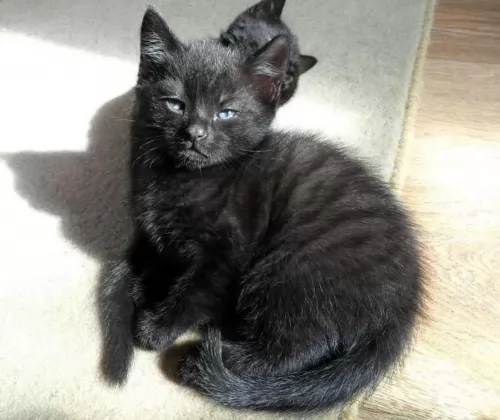 Just like it is wonderful to stroke and pet your pet for his health’s sake, it is also therapeutic for you to stroke your cat.
Just like it is wonderful to stroke and pet your pet for his health’s sake, it is also therapeutic for you to stroke your cat.
Vomiting is one way that you can tell that your cat is sick. He will vomit if he has eaten something he shouldn't have or if he is feeling sick. You must keep an eye on his vomiting as he can become dehydrated and then he wlll need to get to the vet right away.
FLUTD is often brought on by cats that are overweight or unhappy and stressed. It can cause a cat to be miserable, vomit and have a temperature.
You’ll see your cat battling to urinate, he will cry in pain when urinating and be pacing and unsettled. This is an illness that requires urgent veterinary attention.
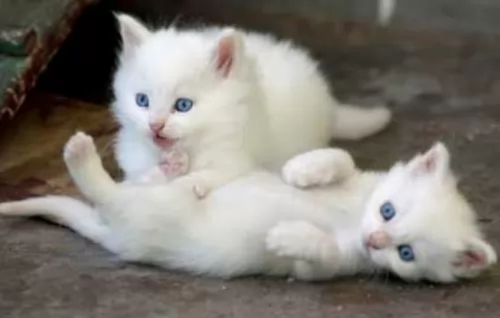 Turkish Angoras are generally healthy, but white cats with blue eyes can be prone to deafness. It is the W gene that is responsible for the white coat and blue eyes. Unfortunately, the presence of a blue eye can indicate deafness in the cat. But there are these cats that have 2 blue eyes and they have normal hearing.
Turkish Angoras are generally healthy, but white cats with blue eyes can be prone to deafness. It is the W gene that is responsible for the white coat and blue eyes. Unfortunately, the presence of a blue eye can indicate deafness in the cat. But there are these cats that have 2 blue eyes and they have normal hearing.
Another problem that has been seen in this beautiful cat breed is Ataxia which is a deadly neuromuscular disorder.
The most common sign of ataxia is an abnormal way of walking and the cat is actually unsteady on his feet. Sometimes the feet can even drag on the ground. Thankfully, screening has reduced the incidence of the disease.
Also, watch out for hypertrophic cardiomyopathy, a kind of heart disease that causes the heart muscle to enlarge.
Just remember that with a cat, diet can also play a huge role in the health of a cat. Your furry friend needs the right meaty foods with the right balance of nutrients to remain healthy and strong.
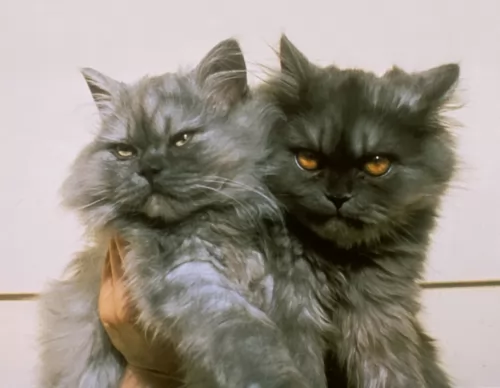 Smokes will require more care than other long- haired cats because their coats are fairly fragile and need to be treated gently and with care. Gentle brushing once or twice a week will keep the coat in top condition.
Smokes will require more care than other long- haired cats because their coats are fairly fragile and need to be treated gently and with care. Gentle brushing once or twice a week will keep the coat in top condition.
The trend today is to brush your pet’s teeth but this can be painful and traumatic for a cat and he can easily lash out in fear, resulting in bites and scratches. The pet groomer and vet can rather look inside your cat’s mouth and tell you if there is any bad tooth that needs attending to.
Provide your cat with good food. Your cat is a carnivore and he must eat meat to ensure his health. The best commercial cat foods are high in protein to ensure your cat gets a balanced meal to promote good health. If in doubt, speak to your vet about the best cat food there is for your furry feline friend.
Provide a constant supply of fresh, cool water.
Provide your cat with a comfortable, soft bed.
Provide him with a litter tray and ensure this is cleaned of the feces every single day.
Have him vaccinated against the major feline diseases. Ensure he goes to the vet when he is in pain or shows signs of illness.
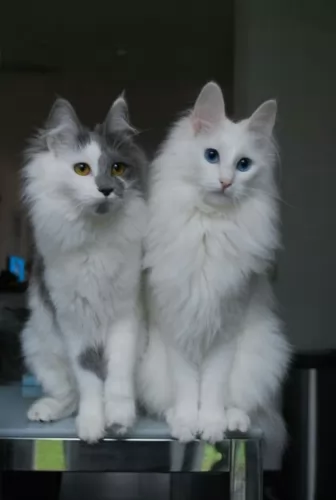 The Turkish Angora has a single coat and the lack of an undercoat makes it easy to brush him and keep the coat soft and silky. Also, the coat is only fully developed when the cat is about 2 years old.
The Turkish Angora has a single coat and the lack of an undercoat makes it easy to brush him and keep the coat soft and silky. Also, the coat is only fully developed when the cat is about 2 years old.
Check the inside of the ears. You may not want to clean them out yourself as you have to be very careful not to damage the ears. The vet and cat groomers can help you with this.
Keep your Turkish Angora’s litter box spotlessly clean. Cats are very particular about the cleanliness of their litter box and the feces will need to be removed every single day.